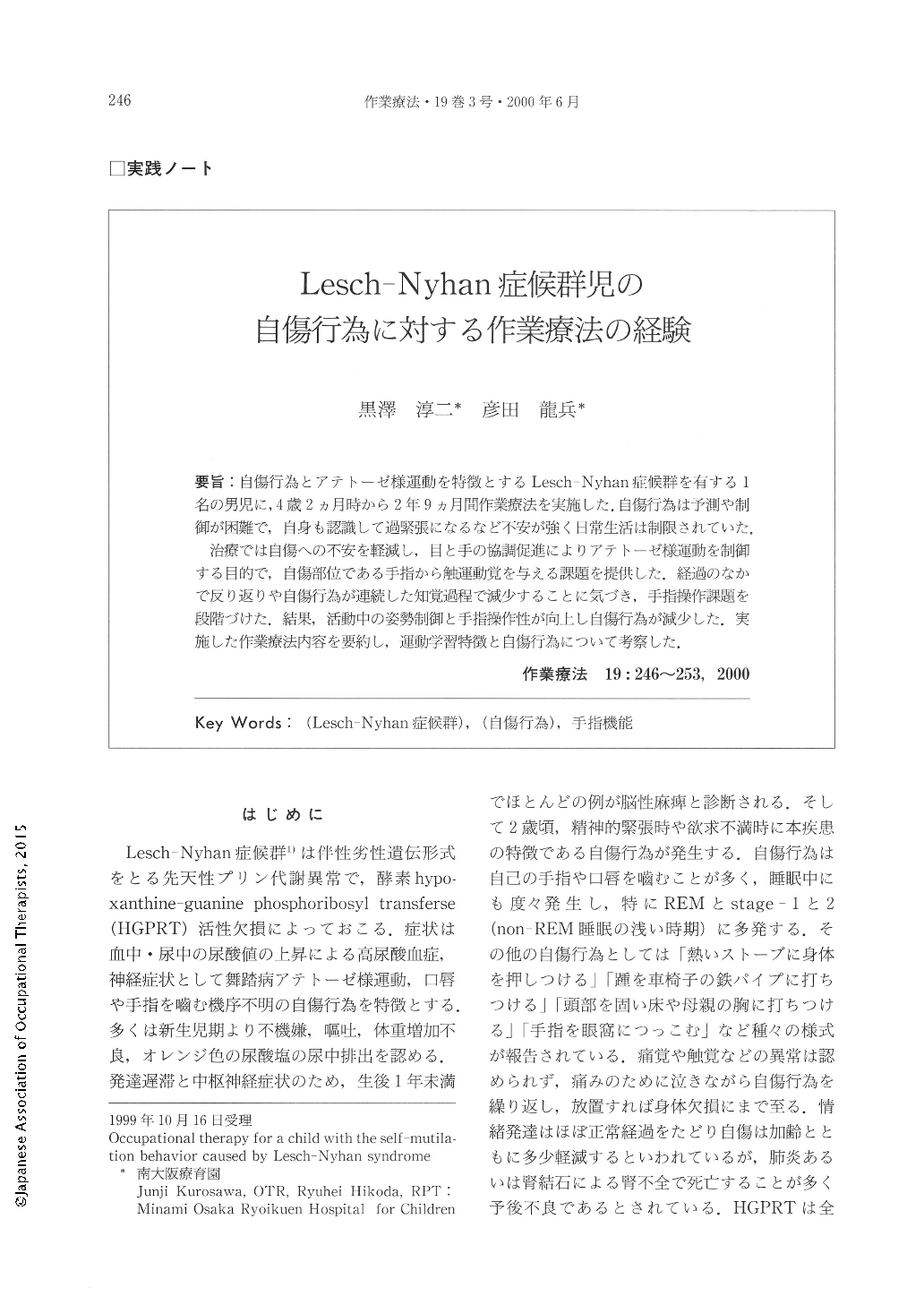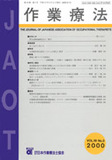Japanese
English
- 販売していません
- Abstract 文献概要
- 1ページ目 Look Inside
- 参考文献 Reference
- サイト内被引用 Cited by
要旨:自傷行為とアテトーゼ様運動を特徴とするLesch-Nyhan症候群を有する1名の男児に,4歳2ヵ月時から2年9ヵ月間作業療法を実施した.自傷行為は予測や制御が困難で,自身も認識して過緊張になるなど不安が強く日常生活は制限されていた.
治療では自傷への不安を軽減し,目と手の協調促進によりアテトーゼ様運動を制御する目的で,自傷部位である手指から触運動覚を与える課題を提供した.経過のなかで反り返りや自傷行為が連続した知覚過程で減少することに気づき,手指操作課題を段階づけた.結果,活動中の姿勢制御と手指操作性が向上し自傷行為が減少した.実施した作業療法内容を要約し,運動学習特徴と自傷行為について考察した.
The peculiar symptoms of Lesch-Nyhan syndrome are self-mutilation and the movement is similar to athetosis. The self-mutilation behavior is ill-defined; however, some behavior patterns include biting of the mouth, lips, fingers, and other body parts. Occupational therapy was utilized for 2 years and 9 months on a male child from the age of 4 years 2 months. No one could forecast or control the selfmutilation behavior. The child feared his own self-mutilation behavior, and the activities of daily life tended to be restricting.
The hypothesis is that the child's self-mutilation is caused by interrupted perceptual process for a central nervous system disorder. Our therapy approach included a graded series of tasks of hand-finger activities, since the child lacks hand-finger exploratory activity.
As a result, this case acquired switch activity for increasing his finger control. He achieved this through postural control from doing tasks. This report discusses the occupational therapy approach used, and the mechanism of self-mutilation behavior.

Copyright © 2000, Japanese Association of Occupational Therapists. All rights reserved.


